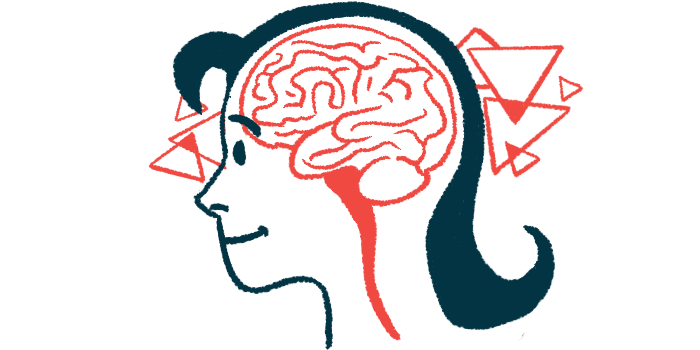NMOSD could underlie neurological symptoms in lupus: Study
Analysis included 46 people with at least 1 clinical feature of both conditions

Certain neurological symptoms of neuromyelitis optica spectrum disorder (NMOSD) occur at higher rates in patients who also have systemic lupus erythematosus (SLE), according to a recent review study.
Features of NMOSD, including longitudinally extensive transverse myelitis — a type of spinal cord inflammation — and involvement of certain areas of the brain were seen at higher rates in patients with both autoimmune diseases than usually observed in NMOSD alone.
Because the neurological symptoms of NMOSD can overlap with those of SLE, it may be, “difficult to differentiate threadbare whether SLE or NMOSD is driving … these cases of cerebral involvement,” the researchers wrote, noting that SLE patients with neurological involvement should be tested for NMOSD-causing antibodies.
The study, “Overlap syndrome of anti-aquaporin-4 positive neuromyelitis optica spectrum disorder and systemic lupus erythematosus: A systematic review of individual patient data,” was published in the journal Lupus.
Both autoimmune disorders, NMOSD and lupus are each characterized by the immune system wrongfully attacking the body’s own tissues.
In NMOSD, these attacks primarily affect the nervous system, leading to inflammation in the spinal cord (myelitis) and optic nerve (optic neuritis), the nerve that transmits signals between the eyes and brain.
On the other hand, SLE attacks can affect any of the body’s tissues, often leading to skin, kidney, bladder, and musculoskeletal issues, with neurological symptoms sometimes also seen.
Number of patients have both NMOSD, SLE
A number of case reports have described NMOSD and SLE coexisting in the same patient. For some of these SLE patients, NMOSD could be the underlying cause of any neurological manifestations, according to the team.
Given that such cases are rare and a wide range of outcomes have been reported, the scientists conducted a systematic review of published studies to learn more about the clinical features and management of overlapping NMOSD and SLE.
Their analysis included data from 46 patients who exhibited at least one clinical feature of both conditions. NMOSD patients were positive for aquaporin-4 (AQP4) antibodies, the most common type of NMOSD-causing antibody.
Most patients were female (91.3%), consistent with the known female predominance in both autoimmune diseases. The mean age of SLE onset was 29.9 years, and NMOSD was diagnosed at a mean age of 32.7.
SLE onset preceded NMOSD in 47.8% of patients, by a median of five years. Onset of the two diseases was concurrent in 34.8% of patients, and NMOSD occurred first in 17.4% of the group, by a median of 1.5 years.
The scientists looked at the core clinical features of each disease in these patients, finding that rates of some features differed from what’s usually seen.
For example, spinal cord MRI imaging indicated that 87% of patients had signs of longitudinally extensive transverse myelitis, a type of spinal cord inflammation that extends over three or more vertebral segments, which has previously been reported at rates of 30%-47% in NMOSD.
Also, in available brain MRI images from 35 patients, 27 patients had abnormal findings. Acute cerebral syndrome, a core NMOSD manifestation in the brain, occurred in 10.9% of NMOSD-SLE patients, compared with 3%-6% observed in previous reports of NMOSD patients.
Among those with brain MRI abnormalities, involvement of the brainstem, often characterized by symptoms like double vision, slurred speech, or uncoordinated movements, was observed in 29.6% of patients, which is also higher than anticipated, according to the team.
Because the symptoms that accompany brain involvement in NMOSD can closely mimic the neurological signs of SLE, “we suggest after ruling infections in lupus, it’s worthwhile testing for AQP4 positivity,” the researchers wrote.
This is important because NMOSD is linked to a relapsing disease course and the accumulation of permanent neurological disability requires prompt treatment, they noted.
Certain core features of SLE also looked different in the NMOSD-SLE patients. For example, blood-related manifestations were more common (63%) than what’s usually seen.
Treatment most often included steroids, plasma exchange
Treatment patterns were generally consistent with previous reports in NMOSD patients, including intravenous (into-the-vein) steroids and plasma exchange therapy to treat acute attacks and tapering oral steroids to induce remission.
Immunosuppressants like mycophenolate mofetil, azathioprine, and rituximab are typically preferred agents for helping to induce and maintain remission. But in this study, the most commonly used immunosuppressant was cyclophosphamide (65.2%), a frequency higher than expected given then lower efficacy and higher discontinuation rates seen with this drug.
While neurological outcomes after immunosuppression were not assessed, researchers believe that agents such as mycophenolate mofetil might be a better, more well-established choice for patients with both NMOSD and SLE, with cyclophosphamide reserved for treatment-resistant cases.
Over a median follow-up of two years, 30 of 31 patients with evaluable data exhibited a relapsing disease course.
As of the last follow-up visit, 38 patients showed improvement, five were stable, and three exhibited a worsening of NMOSD manifestations. One patient died due to respiratory failure.
“This review helps clinicians to be sensitized about the mosaic presentation of overlap syndrome and manage them with appropriate immunosuppressive therapy,” the researchers wrote.
Still, “the short follow-up durations make it difficult to accurately assess neurological outcomes,” they concluded.







